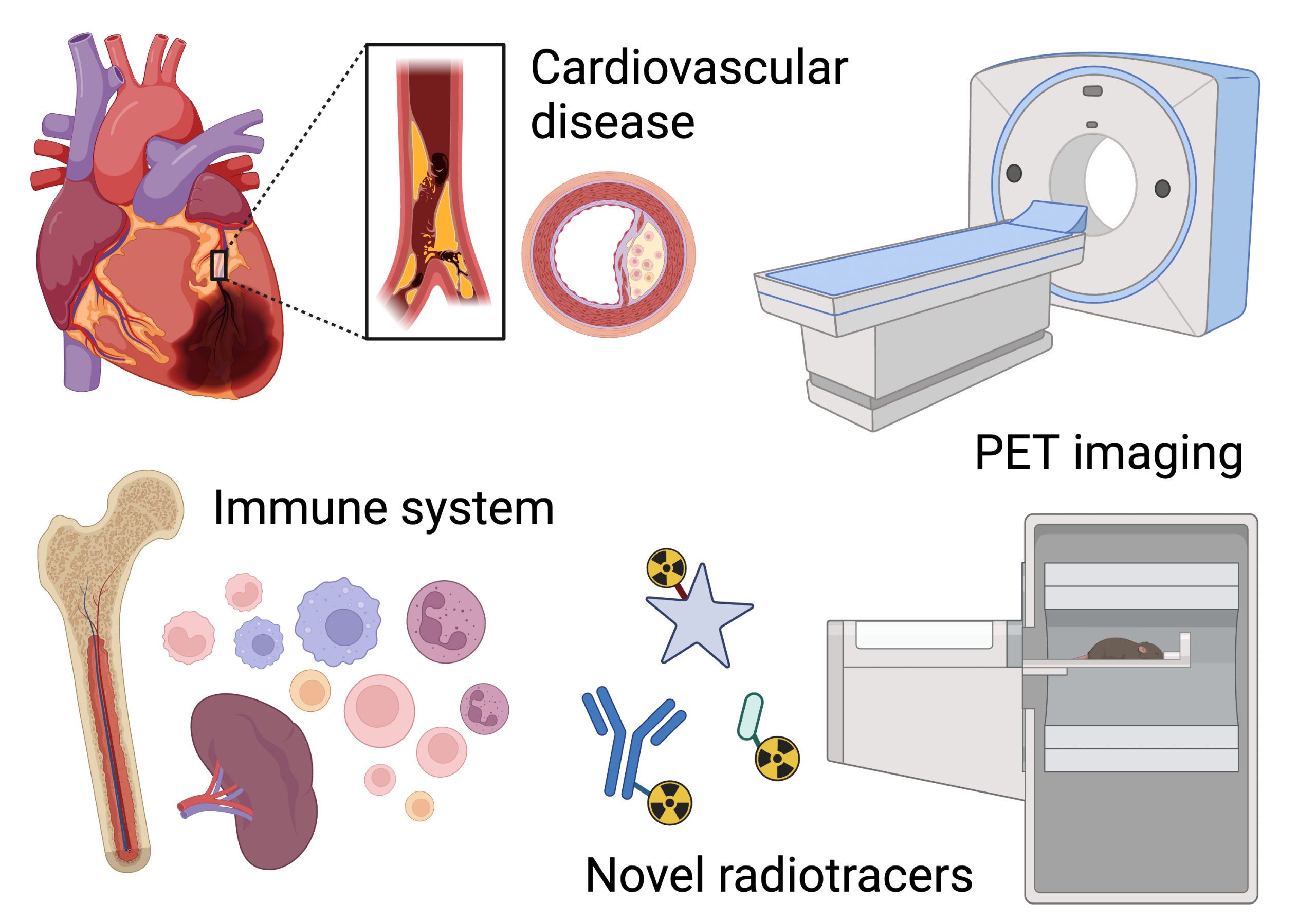Molecular Imaging
Molecular imaging is a powerful tool that enables the visualization and characterization of molecular and cellular processes in living organisms. At our laboratory, we utilize a variety of imaging modalities, including positron emission tomography (PET), computed tomography (CT), and magnetic resonance imaging (MRI), to develop and apply molecular imaging approaches for studying immune responses in cardiovascular disease. We also explore the potential of these techniques in diabetes and organ transplantation research.
One of the techniques we use is nanobody-based PET imaging. Nanobodies are single domain antibody fragments derived from camelid antibodies, which possess exceptional affinity, high tissue penetration, and favorable clearance kinetics. Therefore, nanobodies are ideal candidates for developing PET tracers. We aim to use nanobody PET to non-invasively image cell subsets in vivo. By targeting specific immune cells, such as macrophages or T cells, we can gain insights into the underlying mechanisms of cardiovascular disease, diabetes, and organ rejection. The information obtained from these imaging studies can help in the understanding of pathophysiology and the development of new therapies for patients.

Cardiovascular Immunology
Atherosclerosis is a leading cause of cardiovascular disease, which is initiated by endothelial disruption and the accumulation of lipids in the arterial intima. This process triggers the influx of inflammatory monocytes that differentiate into macrophages and contribute to plaque growth and inflammation. In recent years, research has shifted the understanding of atherosclerosis pathophysiology from a lipid-driven disease to a chronic inflammatory disease. Despite effective therapies to reduce the risk of cardiovascular events, residual inflammatory activity persists. To increase our understanding of residual cardiovascular risk, our laboratory investigates how external factors, such as psychosocial stress and infections, modulate inflammation in atherosclerosis. To study these interactions non-invasively, we utilize molecular imaging tools.
